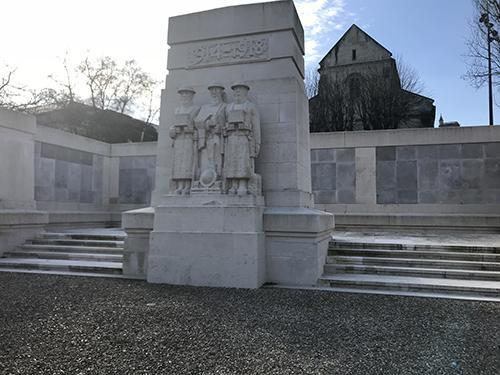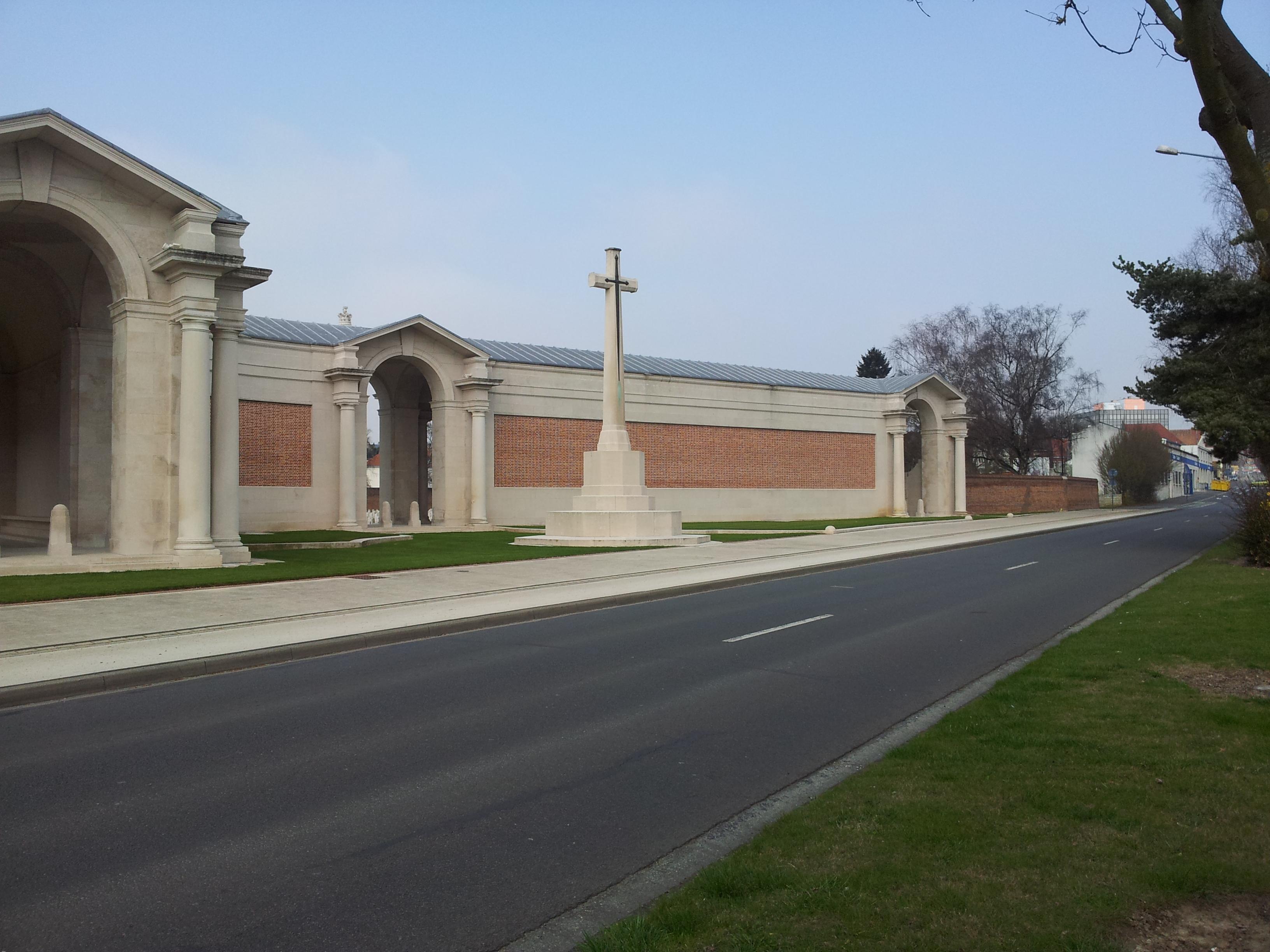Remembrance – Ernest Wyles

Today we remember Bourne man Ernest Wyles who was killed in action on the 27th May 1918 serving with the 25th Machine Gun Corps.
Ernest was born in 1890 in Market Deeping to Edward Wyles a gamekeeper born in Market Deeping in 1848 and his wife Emily Bellairs born in Market Deeping in 1849.
The couple were married in Market Deeping on the 8th January 1866 and stayed in Market deeping all their lives having 15 children there. They declared that one child had died before 1911 when they filled out the census.
- Arthur Wyles, 1866, Market Deeping
- Edward Wyles, 1867, Market Deeping
- John William Wyles, 1868, Market Deeping
- Walter Wyles, 1870, Market Deeping
- Annie Wyles, 1872, Market Deeping
- Frederick Wyles, 1875, Market Deeping
- Emily Wyles, 1878, Market Deeping
- Albert Wyles, 1880, Market Deeping
- Levinia Wyles, 1882, Market Deeping
- George Wyles, 1884, Market Deeping
- Walter Wyles, 1885, Market Deeping
- Harvey Wyles, 1887, Market Deeping
- Percy Charles Wyles, 1888, Market Deeping
- Ernest Wyles, 1890, Market Deeping
In 1891 Ernest is living with his parents in Towngate, Market Deeping, Edward employed as a Gamekeeper. Ten years later in 1901 nothing much had changed, they were still in Towngate, and Edward was employed as a gamekeeper although by now only Percy, an agricultural labourer and Ernest, a scholar, were still living at home.
By 1911 They had moved to Uffington with both Percy and Ernest still living at home. Now though Edward is working as a County Council Roadman, Percy is working as a Brewer’s Drayman and Ernest, now 21, worked as a carter in a brickyards.
Ernest was married in 1915 to Ivy Ophelia Parker, a dressmaker, who was living in Eastgate Bourne. She was born in Bourne on the 6th October 1894, the Daughter of George Henry Parker and Mary Jane Philips.
In 1919 Ivy was living at 10 Clarence Terrace, Austerby, Bourne according to Army Pension Records, other records show that she also lived at The Mason’s Arms on South Street in Bourne after this.
Around July 1916 Ernest enlisted in the army. Conscription had come in in January 1916 for all single men of age 18 to 40 to serve their country. This had changed in May 1916 to include Married men thus making Ernest eligible for conscription.
Ernest’s service records, like 60% of all WW1 soldiers were subject to a fire in the storage warehouse in London during the Blitz. That leaves us trying to piece together his story of the war from various remaining records and therefore exact dates are largely not known.
Ernest on enlistment and training had been posted to the 7th Battalion South Staffordshire Regiment with a regimental number of 25075. After training he would have joined his Battalion in France. They had been out in Gallipoli in 1915 followed by Egypt defending the Suez Canal before being posted to France in July 1916.
We would expect Ernest to join his regiment around November of 1916. As we do not know the exact date we cannot really tell when and where he fought.
The Battalion had been involved in the Battle of Thiepval Ridge at the end of September and then had been moved into the Ancre sector of the Somme by January 1917.
1917 had the Battalion in the Somme initially and then moved out to Belgium in readiness for the battle of Messines Ridge.
On the war office daily list of the 27th August 1917 Private Ernest Wyles 25075 of the South Staffordshire Regiment was listed as wounded. These lists could be 4 to 6 weeks behind the actual dates and therefor there is no actual date or location that he was wounded in the records. At the end of July and the beginning of August the Battalion were in trenches around Hulluch, to the North of Loos.
After leaving the trenches around Merthyr Sap and Bacon Sap on 6th August the Battalion went into Divisional Reserve for one week of training. During August the Battalion lost few men as casualties and the Diary even lists any Privates that were wounded and so we have to assume that as Ernest was not mentioned he was wounded during their last tour in the trenches around Essex Trench at the end of July.
Ernest Wyles was posted to the Machine Gun Corps, the date cannot be seen from any records but in many cases once a wounded soldier had convalesced and then was posted medically fit for action they would be posted to a battalion that was in need of replacements.
We are not sure of the details of his wound, convalescent period, if he re-joined the South Staffs or when he was posted to the Machine Gun Corp, then we have to look at the Diaries for the Machine Gun Corps in Ernest’s last days in May 1918 and their action around the 27th Just south of The Aisne.
9th May 1918 – Herzeele
Battalion entrained at Heidebeke for move to IX Corps (6th French spring? Area), HQ and A+B Companies left at 7.45pm, C+D Companies at 10.45pm. At 10.40pm just prior to the departure o the train, enemy aeroplane dropped 6 small bombs on the metals close to the train. No damage was done.
10th May 1918
On Train
11th May 1918 – Fismes
Arrived Fismes in the morning. Marched to Cohan to billets.
12th May 1918 – Cohan
Cleaning up. Services held in the morning. Weather fine and hot.
13th May 1918 to 22nd May 1918
Training – Training programme was attached to the diary (Appendix no 4). Hot and sunny weather.
52 other ranks reported for duty on 20th May.
23rd May 1918 – Hourges
Lt Col W.T.Raikes to Paris for 4 days leave. Battalion marched to billets at Hourges.
24th to 26th May
Training – Training program was attached to the diary (Appendix no 5).
27th to 31st May 1918
Operations, see attached story.
“Story of operations from May 27th 1918 to June 1st 1918, 25th battalion Machine Gun Corps.
On the night of the 26th of May 1918 the battalion was ordered to proceed to the forward area from billets in Hourges. Companies as under were allotted to brigades and proceeded from camp independently to the following areas:-
A company under Major S.L.Courtauld M.C. to 7 Brigade Guyencourt (Right)
B Company under Major D Campbell to 74th Brigade, Muscourt (Left)
C Company under Capt T.C.B. Udall to 75th Brigade, Ventelay (Centre)
D Company under Major G McCree to reserve in Romain
The companies arrived after the preliminary bombardment had commenced and the 3 first arrived reconnoitred positions in their respective areas, the 2nd positions (Line of the Maizy Cormicy Road).
The enemy was engaged at about 8.30am by Bouffinereux-Roucy-Concevreux + Maizy. 4 Guns of B company under 2nd Lieutenant W.L. Johnstone did great execution at the bridges at this later place, but were forced to give way and fall back on Muscourt about noon.
Two sections of the Reserve Company were ordered to reinforce 75 and 74 Brigades respectively, and later the remaining two sections were sent to the 74 Brigade where situation on the left flank appeared to be serious.
In the late afternoon of 27th a strong enemy attack was completely wiped out at point blank range on the Muscourt – Romain road by the concentrated fire of 7 machine guns. On the night however the enemy working well through the woods E & W of Guyencourt cut off or destroyed by close range sniping a number of A + C Companies guns. Good work appears to have been done in the attacks, but owing to the infantry retirement, the guns were left entirely isolated and unsupported and the enemy were thus enabled to attack from all sides. Capt T.C.B. Udall who had made his HQ in Roucy, was surrounded and possibly a prisoner.
About midnight 27th the enemy were reported in Courlandon and Ventelay and it was considered unpracticable to hold the salient north of Romain. A retirement was therefore ordered to the high ground N of Montigny. In all 11 Guns were still working under orders of the Battalion H.Q, though it is kown that several others had attached themselves to infantry units in the neighbourhood of Bouvancourt.
By the end of the report on the 31st May the line had been pushed back daily and the Battalion reported the following casualties.
Killed, 5 officers and 10 other ranks
Wounded, 10 officers and 120 other ranks
Missing, 5 officers and 108 other ranks.
Private Ernest Wyles was reported to have died and was most likely one of the missing men killed in the action of the 27th May 1918 described in the Battalion diary.
On the 19th December Ivy Wyles was awarded Ernest’s pension and war gratuity and one year later his War Gratuity payment. Ernest’s medal card suggests that as of the 6th March 1923 his British War Medal and Victory Medal were still “Undisposed of” which meant never sent or claimed up to this date.
Commonwealth War Graves Commission:
In memory of Private Ernest Wyles, 136409, 25th Bn., Machine Gun Corps (Infantry) who died on 27 May 1918 Age 23. Husband of Ivy Opthelia Wyles, of 15, Mason Arms, South St., Bourne, Lincs. Remembered with honour, Soissons Memorial
Ernest is also remembered on the Roll of Honour in Bourn Abbey Church and listed on the Bourne War Memorial.
https://www.southlincolnshirewarmemorials.org.uk/our-villages/bourne/ernest-wyles/
We will remember them











Recent Comments